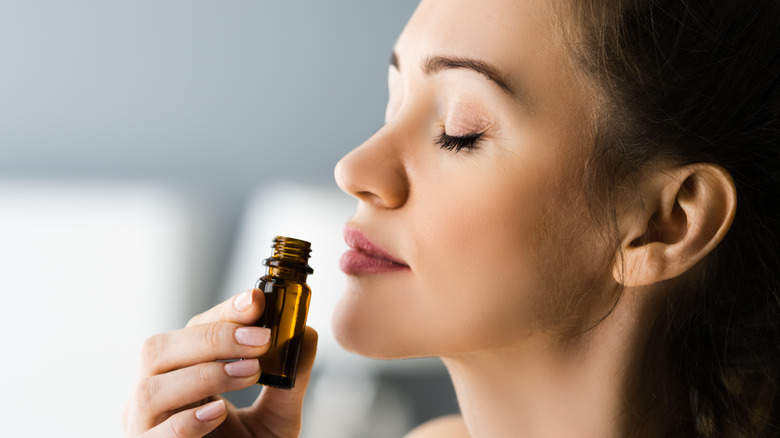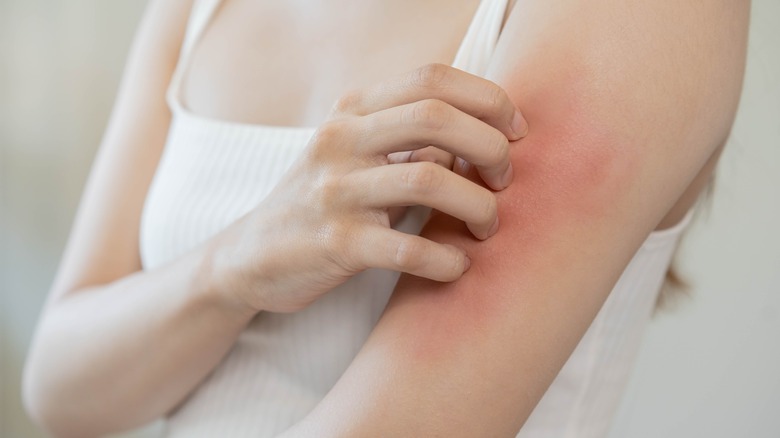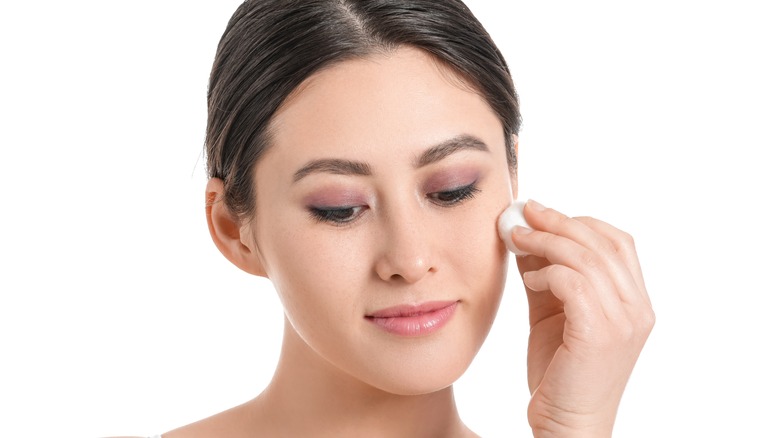How To Integrate Tea Tree Oil Into Your Beauty Routine
You should expect any foray into essential oils to leave you a little giddy with excitement. There is no guarantee that they will work, but the fact that they hold the promise of relieving ailments from headaches to itchy skin unleashes the kitchen-sink scientist in many people. They know that sometimes a minor tweak, like changing the ratio of essential oil to carrier oil, can spell the difference between a critical oil worth bottling and storing on the bathroom shelf and one that must go back to the home "laboratory" for finessing.
Expect the same type of fun with tea tree oil, which, like other essential oils, comes from a plant extract — in this case, the leaves of the Australian tea tree, Mayo Clinic says. If you've been looking for a gentle substance that lifts makeup and unclogs pores, tea tree oil may be what you've been looking for, Healthline says. It champions many other skin issues, too, so it may be worth learning how simple it is to integrate into your regular beauty routine.
Learn what this oil purports to do
Also known as melaleuca oil, tea tree oil has certain traits in abundance, Medical News Today says. It's well-known for its many "anti" qualities, including its ability to be antibacterial, anti-inflammatory, antifungal, and antiviral. This means that tea tree oil is particularly well suited to treat acne since it goes after swelling and inflammation, easing the way to smoother skin, Healthline says. For the same reasons, it can relieve other forms of inflammation, too.
Eczema, dry skin, itchy skin, and symptoms of psoriasis are other potential targets of tea tree oil. It can also go to work on skin infections and even help wounds heal faster. On the other end of the spectrum, the oil may fight oily skin, owing to its antiseptic qualities.
While it can be fun to experiment with essential oils, it may help to keep your expectations grounded. You're venturing into an unregulated industry that uses terms like "pure" and "medical grade" without much agreement about what they mean, Healthline says. Moreover, much of the "evidence" of how essential oils work is anecdotal in nature (as opposed to being rooted in science). The good news is that essential oils are considered safe and, used to address minor health issues, are probably harmless. Still, to be certain, consult your healthcare provider for an expert opinion.
Learn how to apply the oil
You can purchase essential oils like tea tree oil at most pharmacies and grocery stores. As long as you're there, you should pick up a bottle of carrier oil, too. A carrier oil dilutes the essential oil since it's too strong and irritating to be applied directly to the skin. A carrier oil (like coconut or olive oil) does exactly as it says: it safely "carries" the oil to the skin, Healthline says.
Assuming the bottle has a dropper or drip opening, squeeze 12 drops of carrier oil into a bowl, followed by 2 drops of tea tree oil. Stir the mixture with a plastic stick or cotton swab. Before applying it to your face — assuming that's where your skin condition lies — do a test on the palm of your hand to ensure you don't have a reaction. If you don't, Inspire Beauty recommends applying the oil with a cotton ball every other night to start and then perhaps ramping up to a daily routine. By then, if the oil works for you, you're perfectly entitled to feel giddy with excitement.


